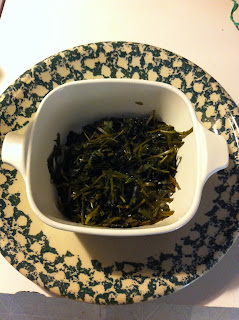I am all
about being able to manufacture items that we need in the field. Crafting. The ability to
do so, in my mind anyway, is the blood that pumps through the woodcrafting – bushcrafting –wildcrafting veins and arteries.
The ability
to do so … the skills to do so … do
not pop out of a hand cranked box like a Jack-In-The-Box to lend a hand on an unscheduled day when we are suddenly surprised and shocked by the proverbial sky falling on us. It takes time to
learn skills. It takes devotion to task to develop skills to the point that our
skills will stand by us. Rain or shine … on a simple weekend outing or in a
genuine crisis situation … we have what we need in our skills tool box to
engage the situation.
There is an
adage floated around in this community that goes “the more you know … the less you need.”
There is a
lot of truth contained in those eight words. There is, at the same time, also
some dangerously thin ice laid down by the Bushcraft Bravado of more than a few
folks that I’ve heard insist that the 10-C’s, or, worse yet, the 5-C’s are all
you need in a physical kit in order to survive as long as you know what you are doing.
Maybe. Maybe
not.
Personally,
I want the ice beneath my feet to be as thick as I can possibly make it. I want
a few aces tucked up my sleeve … whether I’m out for a pleasant weekend or
discover myself in a genuine survival situation. Why go unprepared to begin with?
 One of the
things that I’ve emphasized, both in classes and conversations with
individuals, is the very first tool … the very first survival tool to manufacture in a woodland crisis situation is a
good stout walking stick. A good stick serves multiple purposes. A good stick
is a tool that serves us well.
One of the
things that I’ve emphasized, both in classes and conversations with
individuals, is the very first tool … the very first survival tool to manufacture in a woodland crisis situation is a
good stout walking stick. A good stick serves multiple purposes. A good stick
is a tool that serves us well.
Helping us
negotiate rough terrain, assisting us in water crossings, harassing thick
vegetation to disclose vipers waiting for unsuspecting victims, whopping said
poisonous snakes as the first step in making a meal of them, and assisting us
in making shelter are a few useful purposes.
A good stout
walking stick can be sharpened, fire hardened on one end, and used as a spear
for both hunting and personal protection.
It can also
be tapered on one end to receive a nice little gig for frogs, fish, and snakes.
This little
gig is one of those aces.
 The first
thing I did with the ones we carry in our kits was to
throw the little threaded screw and nut in the trash. Who carries a small drill
bit and drill in their kit? Not me. Rather than using the provided fastener to
attach the gig, I added a piece of tarred bank line to ours to lash the gig
onto a shaft.
The first
thing I did with the ones we carry in our kits was to
throw the little threaded screw and nut in the trash. Who carries a small drill
bit and drill in their kit? Not me. Rather than using the provided fastener to
attach the gig, I added a piece of tarred bank line to ours to lash the gig
onto a shaft.
Once the end
of the stick has been tapered for the gig to fit, cut a groove into the stick a
half inch or so above the gig. Taper the side of the groove away from the gig
and leave the side closest to the gig a sharp ninety-degree angle. The lashing,
once securely tied, will not slip past the groove and leave you watching dinner
taking off with your gig.
The points on
these little gigs are sharp.
To carry it
safely in our kits I made masks for them out of stiff plastic … I think I cut them out of a coffee can … then wrapped them with duct tape. The lashing holds the mask securely on the gig while it rides in our kits.
Added Note:
A good green stick delivers a lot more whop to a snake with less chance of breaking than a dry stick.
Added Note:
A good green stick delivers a lot more whop to a snake with less chance of breaking than a dry stick.


































